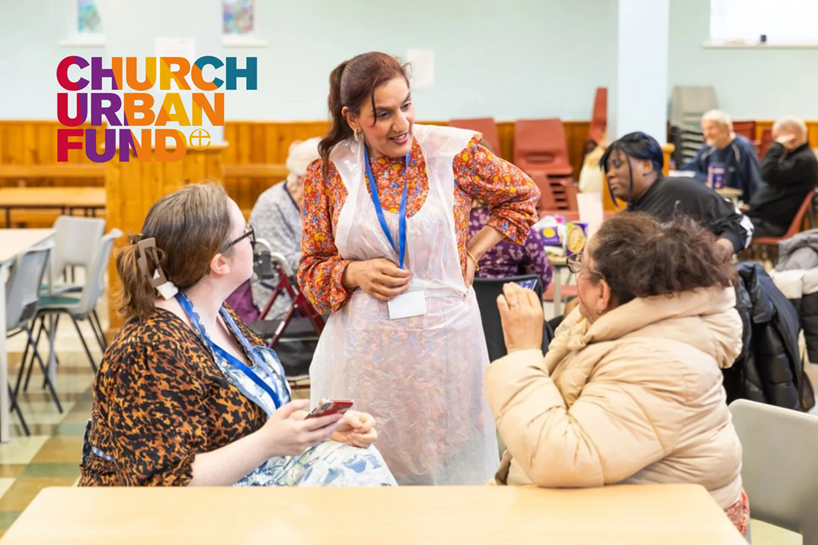IN 2011, I was working among the resilient and vibrant people of Hackney, in east London. This was a place of significant diversity, where more than 50 languages were spoken in the local church secondary school. It was a place of extremes: 42 per cent of children were growing up in poverty, and yet you could not buy a two-bedroom flat for less than £500,000.
The community was subject to a riot that year, just after the death of Mark Duggan, in Tottenham. The implications of such a traumatic event were to be felt for a long time after. It certainly added to a sense of fear, affecting the most vulnerable, as conflict often does.
Thirteen years later, researchers at King’s College, London, prepared work for Dame Sara Khan’s report, After the Riots; they suggested four significant contributing factors in “what works in social cohesion and overcoming tension”. These are: local impact into the design of any intervention (co-production); leadership is crucial at a local level; networks and relationships that surround this work matter; at the local and national level, skills and capacity need to be nurtured.
The impact reports of the Near Neighbours programme, which works with the Church Urban Fund, chime with much of King’s College’s research. Community cohesion works best when relationships of difference are given time and resources to listen and learn about the “other”, and when communities are encouraged to build social and faithful capital in a grass-roots way, particularly among the most vulnerable. Fred Rattley, chief executive of Thrive Together Birmingham, suggests that this work can form “a safety net for the most vulnerable”.

The riots of last summer showed that community cohesion and community resilience are not optional extras, and that stronger, cohesive, and more resilient communities are good news, especially for the most vulnerable. The importance of strong communities was evident in the way in which the community in Liverpool came together after dozens were hit by a car during the trophy parade last week.
Yet, in areas in which programmes such as Near Neighbours are not in operation, resilience is patchier. There is evidence of this in recent research by Near Neighbours across many faith communities, and by Theos and the Church Urban Fund, which have worked with church leaders in areas affected by last year’s riots.
The relationships in neighbourhoods between police, local authorities, charities, employers, and faith groups, particularly as envisaged in Faith in the City, are no longer seen as critical; this is, perhaps, surprising, after the remarkable new strategic relationships that were born during the Covid pandemic.
SO, HOW do churches respond to this reality? How do we build relational and faithful capital, when faithful or religious literacy is a challenge? I would like to make some suggestions, in the spirit of the call of Jeremiah, that we are to seek the welfare of the city, rooted in 15 years of work by Near Neighbours:
- Do we meet local elected officials or senior local-authority staff? Do we know what issues are crossing their desks and affecting the communities that we serve?
- Do we seek the insight of the head teachers, who will see the extremes of the realities of poverty as experienced in home and family life?
- Do we know who the faith leaders are — the rabbis, imams, and so on — with whom we may have much in common in terms of the issues that we face?
- Do we know the community mental-health nurses in our area, who will be able to tell us about the sorts of mental-health issues that are faced?
- Do we meet business owners to help to shape the nature of the economics of an area?
- Do we meet any significant housing providers in our neighbourhoods?
- Do we know any of the local-authority, cohesion, or community-resilience leads for the police, fire brigade, or health service? Do we know how the resilience plans operate, should there be an incident in our communities?
- Do we know the activist groups in the area? How do we relate to them?
THESE are simple starting-points, with an encouragement to neighbourhood leaders — who include all clergy, churchwardens, and church lay leaders — to fill this vacuum of vulnerability. Relational and not transactional partnerships are crucial, in the Near Neighbours model, to shaping strong community resilience and cohesion. Often, this work begins with a simple email and a cup of tea.
This methodology is inspired by Jesus Christ and is clear mission in the serving of local communities. This grass-roots work can also lead to the wider challenge to unjust structures of society which shape inequality and (often relational) poverty. We are called to be good news. What could be better news than providing a “safety net” for the most vulnerable, especially in moments of crisis?
The Rt Revd Rob Wickham, a former Bishop of Edmonton, in north London, is the chief executive of the Church Urban Fund.
cuf.org.uk/social-action-resources
near-neighbours.org.uk/resources
















